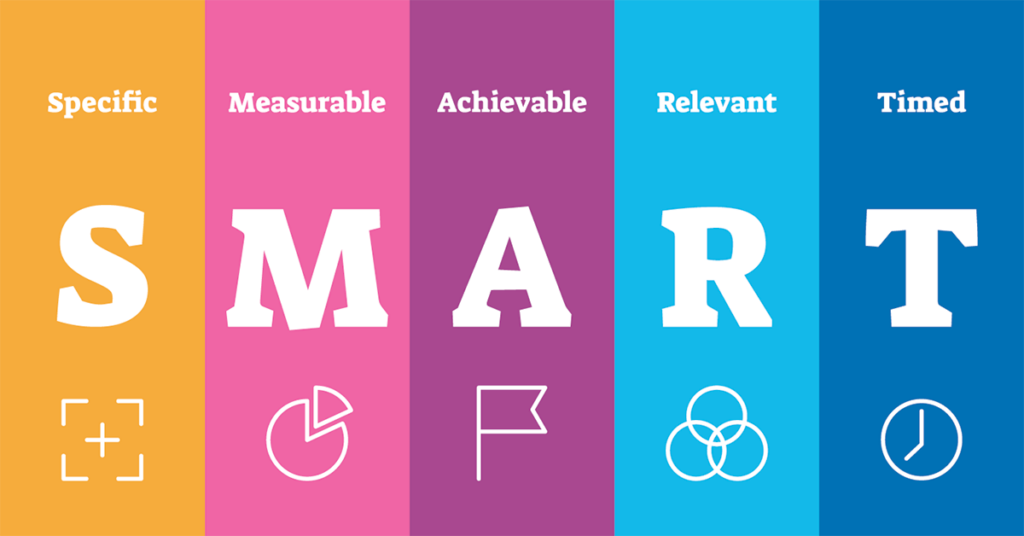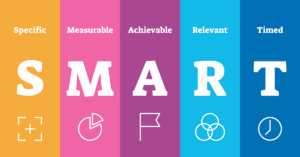How to Reach Your Savings Goals

How to Build Credit with Secured Credit Cards
08/18/2023
FICO Resilience Index: Should You Be Worried? [Infographic]
08/30/2023Saving money is a cornerstone skill for building a stable financial future. Without saving, it’s impossible to build a strong financial foundation. But reaching savings goals is often easier said than done.
is a cornerstone skill for building a stable financial future. Without saving, it’s impossible to build a strong financial foundation. But reaching savings goals is often easier said than done.
Sometimes it takes a bit more strategy to stay on track with your savings plan. Let’s explore how to set and hit your savings goals.
How to Set a SMART Savings Goal
When it comes to setting goals, the right approach can make all the difference to your success. It’s often not enough to simply set broad goals. But setting SMART (Specific, Measurable, Achievable, Relevant, and Time-bound) goals can put you on the path to success.
If you’ve set general goals before, it might have sounded something like, “I want to grow my savings.” It can be challenging to see real results with a vague goal because even increasing your savings by one dollar would satisfy the goal. SMART goals are more concrete than your average goal.
SMART goals can be applied to any area of your life. Here’s a breakdown of each component of setting a SMART savings goal.
Specific
A key feature of SMART goals is their specificity. Specific goals are clear and are more likely to be accomplished than undefined goals.
In order to set a specific goal, consider the following questions:
- Who is involved in the goal? Depending on the situation, the goal might fall to you alone or other members of your household.
- What will be accomplished? Ask yourself what the purpose of the goal is.
- What is the time frame for the goal? Ask yourself when you want to achieve your savings goal.
- Why are you setting this goal? Ask yourself the root cause of setting this goal. On a surface level, it might be to have more funds. But the deeper meaning might be to provide greater financial stability, fund a major purchase, or enjoy a splurge.
For example, a non-specific savings goal might be to just save more money. In contrast, a specific goal might be “I want to save $1,000 within a month.”
Measurable
The next portion of this goal setting is to make the goal measurable. When a goal is measurable, it’s often easier to stay on track.
Here’s what to consider when setting a measurable goal:
- How much? Determine how much money you plan to save.
- What’s the end goal? Don’t leave the goal open-ended. Instead, ask yourself exactly what you want to achieve.
- How will you measure progress? Although the end goal is important, measuring progress along the way is helpful. Progress measurements can help you stay motivated throughout the journey.
For example, you might set a goal to save $1,000 within ten weeks by saving $100 every week.
Achievable
Goals can serve to move you forward. But it’s helpful to set a goal from an actionable place. You should feel challenged by the goal. However, it shouldn’t be so overwhelming that it feels completely out of reach.
When setting goals, ask yourself:
- Do I have the resources to achieve this goal? For many, saving $100,000 in a year is too lofty. But saving $10,000 in a year might be achievable. Take a realistic look at your numbers to determine an appropriate savings goal.
- What am I missing? If you want to set a very high savings goal, ask yourself what it might take to hit it. Cutting expenses might not be enough.
For example, if you are earning $100,000 in a year, you might set a goal to save $20,000 in a year. That’s likely a challenge. However, you have the means to potentially hit the goal. In contrast, someone earning $20,000 in a year likely doesn’t have the means to save $20,000 in a year.
Relevant
Relevant goals have a purpose that ties into your life. The goal should fit into the big picture.
Here’s what to ask yourself:
- Why do I want to achieve this goal? Ask yourself the purpose of setting this goal. You might be trying to build financial stability, fund an amazing vacation, or cover a major purchase.
- Why does this goal matter to me? The goal should have a clear purpose in your life.
For example, you might want to fund a purchase of a new home for your growing family.
Time-specific
Time-specific goals have a start date and an end date. Without a deadline, there’s less urgency tied to the goal.
When choosing a timeline, ask yourself:
- What is the deadline? A deadline can be self-imposed or chosen by external factors.
For example, you might want to save $1,000 within a random month. Or you might want to save $1,000 within the month of May to cover your car insurance.
Example of a SMART Goal
A SMART goal goes beyond a vague desire to save more money. Instead, it nails down the specific details involved in your goal.
For example, a SMART goal might look like:
- Example 1: I want to save $1,000 within ten weeks by saving $100 per week in order to cover a vacation without going into credit card debt.
- Example 2: I want to save $24,000 within one year by saving $2,000 per month in order to cover a down payment on a home purchase for my growing family.
Don’t be afraid to get ambitious with your savings goals. But choosing to make SMART savings goals can help you stay motivated as you push toward your goals.

How to Reach Your Savings Goal
Setting a SMART savings goal is only the beginning. Once you’ve set a goal, it’s time to make progress toward it.
Let’s explore some savings strategies to help you meet your savings goals.
Track Your Spending
Although tracking your spending isn’t always fun, it can shed some light on areas where you overspend. Without tracking, it’s easy to overspend on things you can do without.
Personally, I like to track my spending with the help of a simple spreadsheet. While it sometimes feels tedious to enter my transactions into the spreadsheet, it helps me stay honest with myself about spending.
If the idea of using a spreadsheet is unappealing, you are in luck. There are plenty of apps specifically designed to help you track your spending. After linking your bank accounts, an app like Mint or You Need a Budget (YNAB) can tally up your spending for you.
As you review your spending, you might quickly spot easy places to cut back. For example, you might determine that you are spending too much on takeout or splurges at your favorite store.
Tracking your spending offers a way to scale back on spending that surprises you. It’s not uncommon to be surprised by your spending in a particular category. If you aren’t happy with your current spending situation, don’t be afraid to make a change.
Cut Expenses
A natural way to save money is by cutting your expenses. If you are looking for ways to cut back, consider starting with your biggest spending categories.
According to the Bureau of Labor Statistics, the average American household spends the most on housing. On average, households spend 33.8% of their expenditures on housing. The next biggest categories include transportation, food, and insurance.
If your spending looks similar to the average, you are likely spending the most on housing, food, transportation, and insurance. While it’s helpful to cut spending in discretionary categories, like entertainment and clothing, you’ll have the most room for saving in your larger expense categories.
When looking for ways to cut spending, get creative. Here are some ideas on how to save money in the biggest categories:
- Housing: Look for more affordable housing options. This might involve downsizing to a smaller home, moving to a different part of town, or moving to a different city. Another option is to give house hacking a try, which involves renting out spare rooms in your home to bring down housing costs.
 Transportation: If you can commute via public transportation, that’s sometimes more affordable than maintaining your own vehicle. Other ways to slim down on transportation costs include becoming a one-car household or trading in your vehicle for a cheaper option.
Transportation: If you can commute via public transportation, that’s sometimes more affordable than maintaining your own vehicle. Other ways to slim down on transportation costs include becoming a one-car household or trading in your vehicle for a cheaper option.- Food: If you can resist the urge to buy food outside of your home, you’ll often save a significant amount of money. Give meal planning a try to keep food costs lower.
- Insurance: It’s easy to overpay for insurance. Take the time to shop around for the best deals on insurance. Otherwise, you could get stuck paying more than you need to.
Boost Income
While we often look for ways to cut spending first, boosting your income is another option to help you save more money. If you have lofty savings goals, boosting your income is often the best way to reach them. After all, you can only cut so many expenses out of your budget.
A little bit of creativity can go a long way when it comes to building your income. Tap into your talents as you look for ways to grow your income. Here are some ideas to help you increase your income:
- Ask for a raise: Negotiating to get paid more is usually uncomfortable. But the results can mean earning more money without putting in extra hours.
- Do overtime: If overtime is an option for you, choosing to take on extra hours leads to a bigger paycheck.
- Build a side hustle: A side hustle is any extra form of income that you do on top of your regular income stream. For example, you might walk dogs or complete graphic design assignments on a freelance basis.
Find an Accountability Buddy
Saving money isn’t always easy. If you struggle to stay on track, consider finding an accountability buddy. An accountability buddy serves as someone who can check in regularly to help you stay on track.
For example, you might choose your partner as an accountability buddy while working toward shared savings goals. Or you might choose a friend who you are comfortable talking about money with.
Try a No-spend Challenge
A no-spend challenge can kick-start your savings goals. No-spend challenges come in many flavors.
For example, you might give up discretionary purchases for 30 days. While it can be a challenge to avoid spending, it might give you the strength you need to stick to your savings goals.
Make Saving Money Automatic
Making the choice to save money is often difficult. After all, choosing to save money for the future often means giving up a fun purchase right now. Putting your savings plans on automatic can help you stay on track toward your savings goals by only making the decision one time.
For example, you could have a portion of your paycheck transferred from your checking account to your savings account automatically. When the money is out of sight, it might be easier to avoid overspending.
Consider putting your savings on autopilot as you work toward savings goals.
Create Milestones to Celebrate
Saving money is a big accomplishment. However, it’s not always a fun choice. And in many cases, big savings goals feel like a marathon, not a sprint. Make an effort to make saving money more fun by celebrating milestones along the way.
Celebrating your progress can help you stay motivated to keep moving toward your savings goal. For example, you might celebrate hitting the halfway mark by splurging on a dinner out with your friends.
If possible, build these milestones into your savings plan. You might be surprised by how much a small reward can push you to success.
Frequently Asked Questions
How Do You Achieve a Savings Goal?
Start by setting a SMART savings goal. Then get creative to make your goal a reality.
How Much Does the Average American Have Saved?
According to a Northwestern Mutual study, the average American has $62,000 in personal savings.
How Can You Save $10,000 in a Year?
You would need to save $833 per month to save $10,000 in one year.
The Bottom Line
Saving money is an important skill for anyone who wants to build a brighter financial future. As you set savings goals, make sure the goals follow the SMART framework. Once you have a SMART goal in place, get creative to achieve it.






